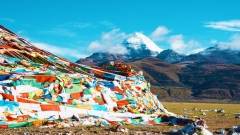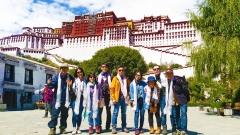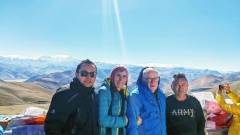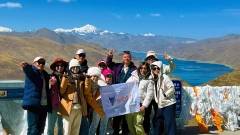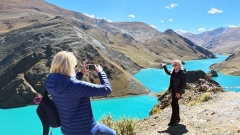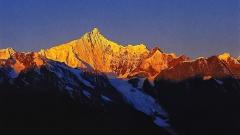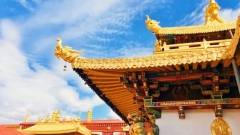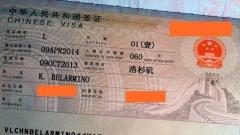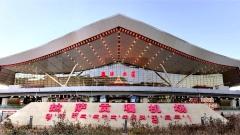Tibet is not only a landscape of jaw-dropping mountains and endless skies – it is also a living, breathing center of Buddhist ritual and festival life. Many of the region’s calendar highlights are bound to the cycles of Tibetan Buddhism: lunar months marked by prayer, pilgrimage and dramatic public celebration. For international travelers who want to witness the heart of Tibetan culture, planning a trip around the major Buddhist holidays is one of the most rewarding ways to experience local life, sacred traditions and unforgettable imagery.
Losar (Tibetan New Year)
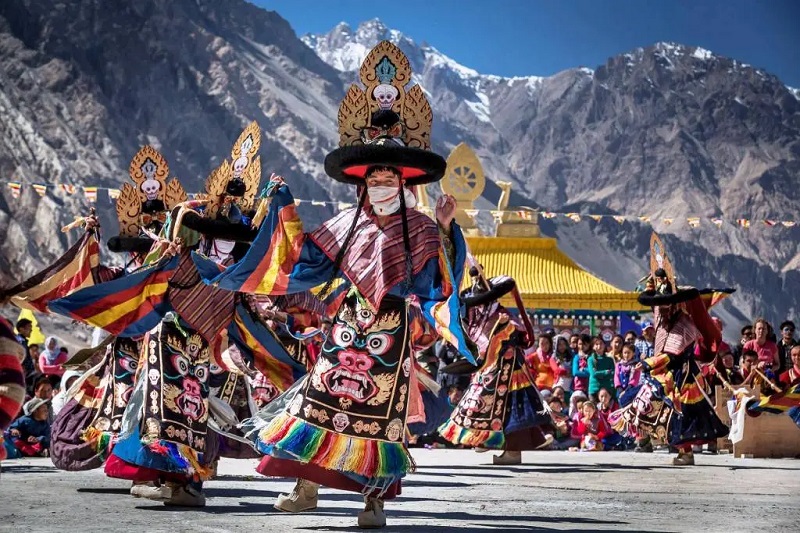
Losar (Tibetan New Year)
Losar — literally “new year” in Tibetan — is the single biggest festival of the Tibetan calendar. It marks the first day of the lunar new year and, in many places, the celebration stretches across several days (traditionally up to 15). Losar is both joyful and ritual-rich: families clean and decorate houses, make special foods, and perform ceremonies to sweep away the old and invite the auspicious.
What To Expect During Losar
On the eve of Losar people perform cleansing rituals to expel misfortune. Homes are arranged with small altars or shrines where family members offer incense, butter lamps, and special New Year foods. Over the first three days there are distinct observances: the first is typically more formal and focused on teachers and monasteries (often called Guru Losar), the second more celebratory and social (sometimes called King Losar), and the third a day of visiting friends and family. Expect music, ritual dances, and the sharing of traditional treats like khapse (deep-fried pastries) and guthuk (a special noodle soup served near Losar).
Travel Tips for Losar
Losar is a joyful but busy time for locals. If you want to witness temple ceremonies, book local guides well in advance; many monasteries host large prayer gatherings and public rituals. Lodging in towns like Lhasa or regional centers can fill early, so reserve ahead. Be prepared for closed businesses on the most important days — but also for brilliant public processions and exceptional photographic moments.
Monlam Chenmo (The Great Prayer Festival)
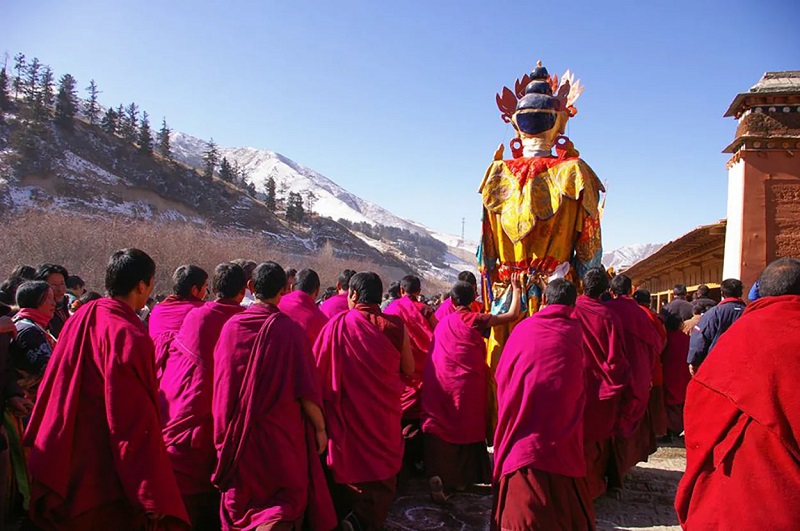
Monlam Chenmo
Monlam Chenmo, the Great Prayer Festival, is one of the most important public Buddhist observances of the Gelug tradition. Historically established to commemorate the Buddha’s enlightenment and institutionalized by Tsongkhapa in the 15th century, Monlam brings monks, scholars and laypeople together for collective prayer, debate, and display of sacred art.
What Happens at Monlam
The festival’s core events include mass chanting of scriptures, large-scale prayers of aspiration, formal scholarly examinations and famously the ritualized monks’ debates that are both intellectually rigorous and visually striking. One of the festival highlights that attracts travelers is the unfurling of enormous thangka (sacred painted scrolls) on monastery walls — a spectacle that draws crowds and photographers alike.
Best Practices for Visitors
Monlam offers a deep cultural immersion but can be solemn for local participants. Dress modestly at religious sites and keep noise to a respectful minimum during prayer times. If you want to photograph debates or thangka displays, ask local guides or monastery stewards for permission and follow any restricted-area rules.
Butter Lantern Festival (Chotrul Düchen & Tsongkhapa Offerings)

Butter Lantern Festival
The Butter Lantern Festival is a luminous, festive close to the Monlam period in many regions. Historically connected to the Lhasa rituals of Tsongkhapa, devotees create intricate butter sculptures and light numerous butter lamps: luminous offerings to the Buddha and the Three Jewels.
What You’ll See
Evening scenes during the Butter Lantern Festival are unforgettable: temple courtyards, windowsills and streets dotted with warm glowing lamps, and creatively shaped butter lamps depicting birds, flowers and religious motifs. In some communities, elaborate butter sculptures top temple altars and public displays create a fairy-tale effect as light and shadow play across painted walls.
Travel / Photography Tips
The festival is superb for atmospheric photography, especially just after dusk. Avoid using flash inside chapels where murals are exposed, and be mindful that butter sculptures and lamps are often sacred offerings — do not touch them. If attending with a guide, ask about opportunities to learn the symbolic meanings of lamps and their odd-numbered placement rituals (in some traditions odd numbers are considered auspicious).
Saga Dawa (Saka Dawa – The Sacred Month)
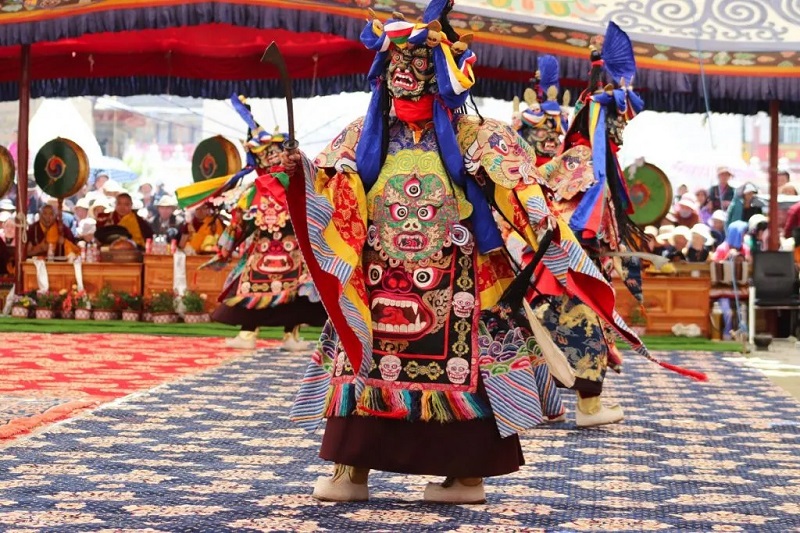
Saga Dawa
Saga Dawa (also spelled Saka Dawa) is perhaps the most spiritually significant month in the Tibetan calendar. The full-moon day in the fourth lunar month commemorates three major events in the Buddha’s life — his birth, enlightenment and parinirvana — and the entire month is treated as especially meritorious.
Practices During Saga Dawa
During Saga Dawa many Tibetans increase acts of generosity, avoid killing animals, perform extra prostrations and do kora (sacred circumambulations) around monasteries, stupas and pilgrimage sites. For international travelers the most visible expression is the huge pilgrim flows to circumambulate sacred sites such as the Lingkhor route in Lhasa or the great kora route around Mount Kailash.
When To Visit
If you want to observe large pilgrimage activity, plan your trip around the full-moon apex of Saga Dawa — a time when merit-making activities peak. Expect crowded temple compounds and long processions. This month is also popular for extended prostration pilgrimages (long-term, demanding pilgrimages performed by some devout practitioners), so show patience and respect for moving pilgrims.
Zamling Chisang (World Incense / World Happy Day)
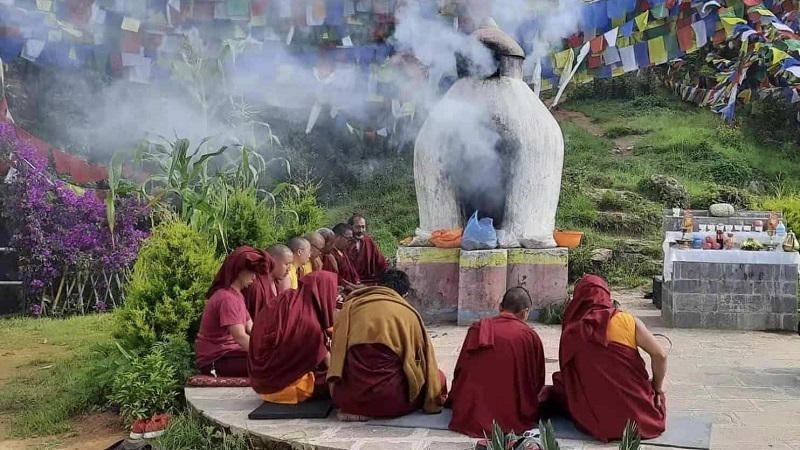
Zamling Chisang
Zamling Chisang is a joyful outdoor celebration that brings families together in public gardens (lingka). It commemorates episodes in early Tibetan Buddhist history — including legendary deeds associated with Padmasambhava — and typically involves picnics, music, dance and the display of fragrant offerings.
A Day in the Lingka
On Zamling Chisang families and friends pitch white tents or blankets beneath trees, share food and drink butter tea and highland barley wine, and enjoy performances. The atmosphere is relaxed, a bright counterpoint to more solemn monastery rituals. For travelers, the festival provides a rare inside look at secular community life and the intertwining of local leisure and religious memory.
Travel Tips
Pack a small picnic, bring sunscreen and a sun hat, and be ready to accept invitations — locals often welcome foreign visitors into their camps. Remember that while the day is festive, sacred songs and dances can appear amid the fun; be attentive to cues and avoid intrusive photography.
Shoton Festival (Yogurt Festival and Summer Operas)
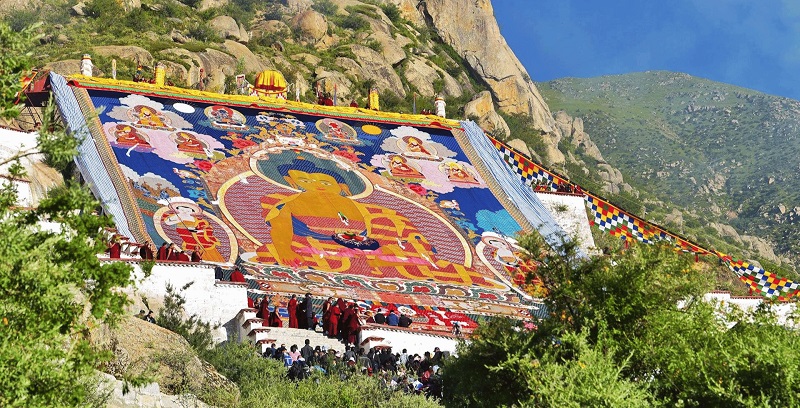
Shoton Festival
Shoton — literally “yogurt banquet” — is famous for combining sacred monastic tradition with lively secular performance. The holiday grew from the custom of laypeople offering feasts to monks (after monks’ month-long retreats), and later incorporated performing arts such as Tibetan opera.
Festival Highlights
Monks who have completed retreats present and receive offerings, and public squares are transformed into stages for traditional opera, masked dances and spectacular visual storytelling. The unfolding of giant thangka in some monasteries and the communal consumption of yogurt and feasting make Shoton a sensory-rich experience.
Best Time to Attend
Shoton falls in summer and is well-suited to temperate weather and long daylight hours. If you are interested in folk performance and theatre, plan to attend the daytime opera sessions and evening festivities. Book transport ahead; summer is a popular time for domestic and international visitors alike.
Buddha’s Descent Day (Lhabab Düchen)
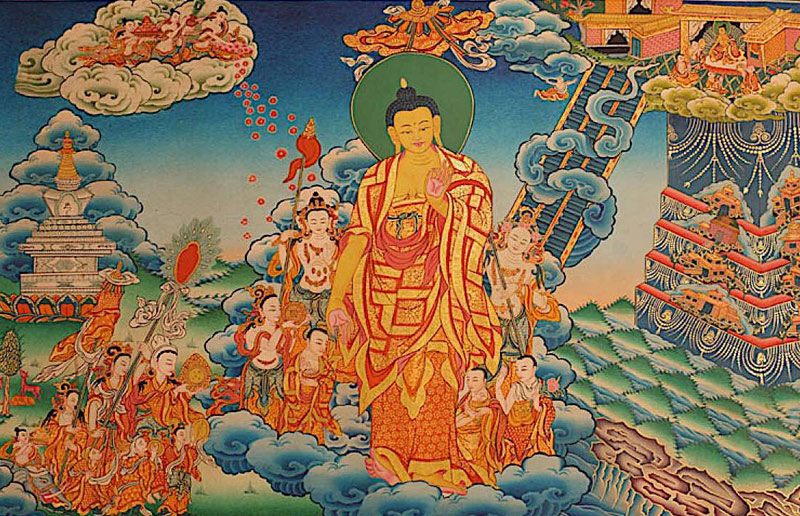
Buddha’s Descent Day
Lhabab Düchen commemorates the Buddha’s descent from the heavens after three months of teaching to liberate his mother. It is one of the four major düchen (great days) in the Tibetan calendar and is deemed especially auspicious — acts of generosity and Dharma practice are believed to yield multiplied merit on this day.
Observances and Significance
Devotees gather at monasteries for large-scale offerings and prayers; some communities mark the event with public rituals or processions. Merit-making activities and charitable giving are emphasized, and temples may hold special pujas.
Travel Considerations
Since Lhabab Düchen is a day when the merit of good deeds is believed to multiply, expect high attendance at major monasteries. If visiting such sites, follow local instructions about photography, shoe removal, and behaviour inside shrines.
Galdan Namchot (Commemorating Tsongkhapa)
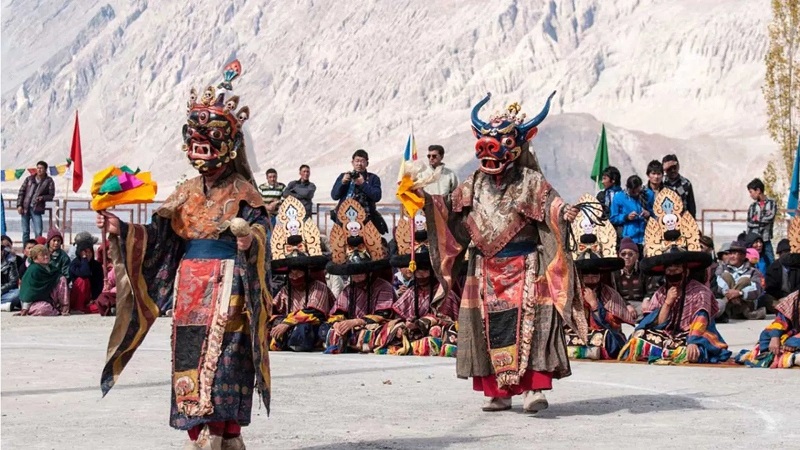
Galdan Namchot
Galdan Namchot honors the birth and enlightenment of Je Tsongkhapa, the founder of the Gelug school. In many areas followers commemorate the day by lighting butter lamps, holding extended chanting sessions and performing sacrificial rites in monasteries.
How People Celebrate
In towns with Gelug presence, windowsills glow with lamps on the night of Galdan Namchot; temples host evening ceremonies filled with chanting and offering. Crafting butter lamps in the days leading up to the festival is often a shared household task, and the number and placement of lamps may carry symbolic meanings.
Tips
If you plan night photography, a discreet low-light camera is ideal. Inside monasteries, avoid bright flash and ask before entering restricted areas. If a local family invites you to share the evening or a lamp-offering, accept graciously — it’s a meaningful cultural exchange.
Practical Travel Advice for Festival Travel
Acclimatization & Health
Many Tibetan festival sites are at high elevation. Give yourself a day or more to acclimatize before intense activity, drink lots of fluids, and avoid strenuous exertion on your first day.
Respectful Behavior
- Dress modestly at religious sites (cover shoulders and knees).
- Ask permission before photographing people, especially older devotees and monks.
- Observe rules about footwear and shutter noise in temples.
- Participate when invited but avoid interrupting rituals.
Bookings
Major festivals draw crowds — guide and lodging bookings should be made early. If you want front-row access to thangka unfurlings or special monastery ceremonies, arrange a local liaison or guide to facilitate access.
Why Timing Your Trip Around Buddhist Holidays Is Worth It
Traveling during Tibetan Buddhist holidays offers vivid opportunities to witness living religious culture — from enormous public thangka unveilings to intimate family shrines, from rhythmic debate sessions in monastery courtyards to nightscapes of butter lamps glowing in the cold. Each festival provides a different angle on Tibetan life: Losar shows family and community renewal; Monlam highlights scholastic and monastic life; Saga Dawa reveals pilgrimage zeal; Shoton offers theatrical and folk spectacle. For travelers who value cultural depth, festivals transform a scenic trip into a meaningful cultural immersion.
China Dragon Travel – Tour Support and Custom Festival Itineraries
If you’d like help planning a festival-centered visit to Tibet, China Dragon Travel specializes in custom itineraries for international tourists. We handle permits, local guides, timing for key ceremonies (e.g., thangka unveilings, Monlam debates, Saga Dawa pilgrimages), and logistic support for high-altitude travel. Whether you want a photography-oriented sunrise at a butter-lamp-lit temple, a cultural immersion at Losar, or a pilgrimage route timed to Saga Dawa, we can design safe, respectful and memorable experiences across Tibetan regions.



